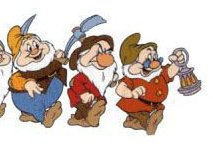- Some New Year resolutions for the office.
 A couple of years ago I wrote a column titled, "Hi Ho, Hi Ho, It's Back to Work We Go" (Jan 06, 2014), whereby I gave some advice to managers regarding the implementation of changes in the office to make employees more productive. Basically, I discussed how some simple modifications in the office's physical appearance can have a positive effect on the corporate culture. Here, I would like to continue by describing some attitudinal changes by office workers, including both management and the work force.
A couple of years ago I wrote a column titled, "Hi Ho, Hi Ho, It's Back to Work We Go" (Jan 06, 2014), whereby I gave some advice to managers regarding the implementation of changes in the office to make employees more productive. Basically, I discussed how some simple modifications in the office's physical appearance can have a positive effect on the corporate culture. Here, I would like to continue by describing some attitudinal changes by office workers, including both management and the work force.
First, middle management should learn to manage more and supervise less (e.g., micromanagement). This means they should treat workers like professionals, empower them to perform projects and tasks on their own, and try to stay out of their way. The only time the manager should become involved is when a problem arises that cannot be solved by the workers, assigning new projects or tasks to be performed, and holding workers accountable for their actions. To make this effective, a routine reporting system must be devised to keep management appraised of the status of projects and activities (e.g., a project management system). This, of course means a Theory Y form of management where employees are managed from the "bottom-up" as opposed to autocratic rule ("top-down"). Such an approach will cause workers to become more resourceful, innovative, and develop a sense of "ownership" over their work products, thereby promoting corporate loyalty.
Management should also endeavor to manage the workplace and corporate culture in such a way as to promote a professional atmosphere, high ethics, promote teamwork and courteous behavior, thereby causing workers to become more disciplined and develop a sense of pride in workmanship.
Two other ideas come to mind; first, making sure the staff understands the history of the business and their chosen craft, and; second, teach employees to "think big" by having them become cognizant of the big picture of the business. For example, if they are charged with a small part of a system, have them learn about the entire system so they come to understand how their role affects others. This will encourage them to think beyond their scope of work and create synergism among the workers. Both middle management and workers should also be aware of the amount of money required to operate their section of the business. This means they should participate in the process of developing a budget. By doing so, it makes them conscious of profit and loss, which helps to focus their priorities and incentives.
Workers also need to adjust their attitude. Instead, of watching the clock, they should dedicate themselves to learning more about the work products they are charged with producing. In other words, they need to be equally cognizant of quality as well as speed in delivery. They should also strive to project a professional image by being courteous, neat in appearance, a team player, and strive to excel the ethical standards of the business. Their motto should be, "What I do not know, I will not fabricate an excuse but endeavor to learn the answer; what I do know, I will share with others."
Senior workers should mentor young workers in the proper procedures for developing and delivering work products, and be smart enough to listen to the younger workers who may have learned a new trick or two particularly in the area of technology.
Conversely, younger workers should listen to their elders and challenge the status quo to constantly seek new and improved ways for performing tasks. Even if they finished school with honors, they should constantly strive to improve their work related skills, this includes learning the corporate history and their craft. After all, there is no need to reinvent the wheel or commit the mistakes of their predecessors.
A little attitude adjustment and some resolutions for the new year can work wonders. As I mentioned in my other column, January is the time for management to implement such innovations. Such changes should capture the attention of the work force and help reinvigorate them for the year.
Keep the Faith!
Note: All trademarks both marked and unmarked belong to their respective companies.
 Tim Bryce is a writer and the Managing Director of M&JB Investment Company (M&JB) of Palm Harbor, Florida and has over 30 years of experience in the management consulting field. He can be reached at timb001@phmainstreet.com
Tim Bryce is a writer and the Managing Director of M&JB Investment Company (M&JB) of Palm Harbor, Florida and has over 30 years of experience in the management consulting field. He can be reached at timb001@phmainstreet.com
For Tim's columns, see: timbryce.com
Like the article? TELL A FRIEND.
Copyright © 2016 by Tim Bryce. All rights reserved.
NEXT UP: WHAT DO WE KNOW ABOUT MR. TRUMP? - Not as much as you think.
LAST TIME: 2015 YEAR-END WRAP-UP - My most popular columns this year.
Listen to Tim on WJTN-AM (News Talk 1240) "The Town Square" with host John Siggins (Mon, Wed, Fri, 12:30-3:00pm Eastern); WZIG-FM (104.1) in Palm Harbor,FL; and KIT-AM 1280 in Yakima, Washington "The Morning News" with hosts Dave Ettl & Lance Tormey (weekdays. 6:00-9:00am Pacific). Or tune-in to Tim's channel on YouTube.
No comments:
Post a Comment